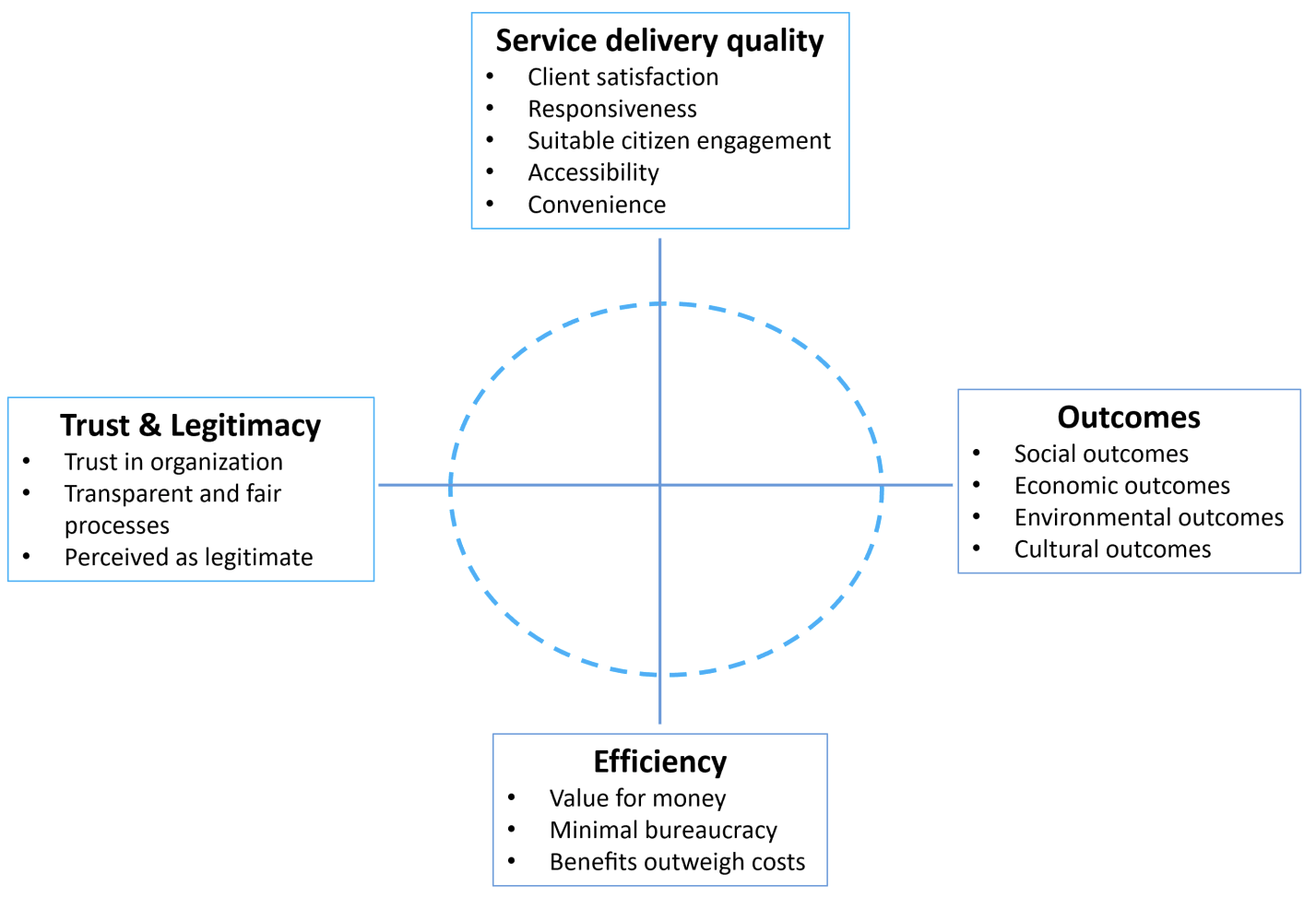Despite abundant literature, how to measure the extent to which public organizations are generating value is still a big problem for researchers unable to quantitatively study the causes, consequences and correlates of public value. It is also a problem for practitioners.
Faulkner and Kaufman (2018) systematically reviewed the growing literature on public value measurement to identify, evaluate, and qualitatively synthesize in a framework four key components for measuring public value.

